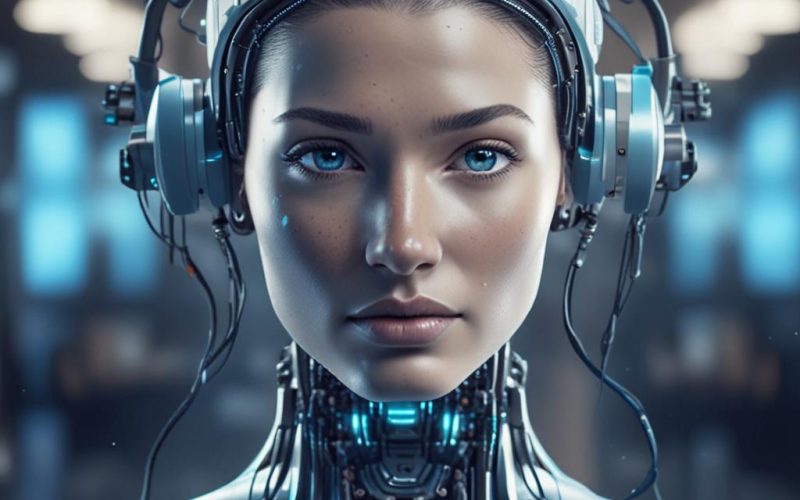Table of Contents Show
Artificial Intelligence (AI) has become a buzzword in recent years, shaping industries, transforming daily routines, and even influencing how we interact with technology. From voice assistants like Siri to recommendation algorithms on Netflix, AI is everywhere—but what exactly is it, and how does it work? This beginner’s guide breaks down the fundamentals of AI, explores its real-world applications, and highlights why it matters in today’s rapidly evolving digital landscape. Whether you’re curious about AI for personal use or professional development, understanding its core principles will help you navigate its impact on society and innovation.
What is Artificial Intelligence?
Artificial Intelligence refers to the simulation of human intelligence in machines designed to perform tasks that typically require human cognitive abilities. These tasks include learning, reasoning, problem-solving, perception, and language understanding. AI systems are built using algorithms that process data, identify patterns, and make decisions with minimal human intervention.

Narrow AI vs. General AI
Comparison table for Narrow AI vs. General AI
AI is divided into two main categories: Narrow AI and General AI. Narrow AI is designed for specific tasks, such as facial recognition or language translation. Most AI applications today fall into this category. General AI, on the other hand, represents a theoretical system with human-like cognitive abilities across all tasks. While Narrow AI is already in use, General AI remains a goal for future research.
How AI Differs from Traditional Computing
Unlike traditional software, which follows predefined rules, AI learns from experience. For instance, a spam filter doesn’t just execute a fixed set of instructions—it evolves by analyzing new data to improve accuracy. This adaptability makes AI powerful but also complex to develop and manage.
Real Examples of Artificial Intelligence
To grasp AI’s practical applications, consider how it’s integrated into everyday life. These examples demonstrate its versatility and impact across different domains.
AI in Healthcare
- Cancer Detection: AI tools like Google’s DeepMind analyze medical images to identify tumors with high accuracy, aiding radiologists.
AI in Customer Service
- Chatbots: Platforms like Zendesk and Microsoft’s FAQ bot handle routine queries, freeing human agents for complex issues.
AI in Transportation
- Self-Driving Cars: Tesla’s Autopilot and Waymo’s autonomous vehicles use AI to process sensor data and navigate roads safely.
How Does AI Work?
At its core, AI relies on data and algorithms to mimic human intelligence. The process typically involves training models using vast datasets to recognize patterns and make decisions. Here’s a simplified breakdown of its key components.
Machine Learning: The Foundation of AI
Machine Learning (ML) is a subset of AI where systems learn from data without explicit programming. For example, an ML model for spam detection trains on thousands of emails labeled as “spam” or “not spam.” Over time, it identifies common traits in spam messages to classify new emails accurately. ML algorithms fall into categories like supervised, unsupervised, and reinforcement learning, each suited to different problem types.
Deep Learning and Neural Networks
Deep Learning, a branch of ML, uses artificial neural networks to process data in layers, mimicking the human brain’s structure. This approach excels in tasks like image and speech recognition. For instance, Facebook’s facial recognition system uses Deep Learning to tag users in photos automatically. Similarly, AI-driven translation tools like Google Translate rely on neural networks to improve language accuracy with each use.

Challenges and Ethical Considerations
While AI offers remarkable benefits, it also raises critical questions about privacy, bias, and societal impact. Addressing these challenges is essential to ensure responsible AI development and deployment.

Data Privacy and Security
AI systems require massive amounts of data, often including sensitive information. Unauthorized access or misuse of this data can lead to breaches of privacy. For example, voice assistants might inadvertently record private conversations, highlighting the need for robust security measures and user consent protocols.
Algorithmic Bias
Bias in AI occurs when algorithms produce unfair or discriminatory outcomes due to flawed training data. A well-known case is Amazon’s recruitment AI, which favored male candidates over female ones because it was trained on biased historical data. Engineers must actively audit and refine models to mitigate such risks.
Job Displacement and Economic Impact
Automation powered by AI is reshaping industries, leading to concerns about job losses. Manufacturing and customer service are already seeing roles replaced by AI-driven systems. However, new opportunities in AI development, maintenance, and oversight are emerging, emphasizing the need for workforce adaptation and reskilling programs.
The Future of AI
AI is advancing rapidly, with breakthroughs in natural language processing, robotics, and generative models. Innovations like AI-generated art (e.g., DALL-E) and healthcare diagnostics are pushing boundaries. As AI becomes more integrated into society, collaboration between technologists, policymakers, and businesses will be crucial to shape its ethical trajectory and maximize its benefits while minimizing risks.
Conclusion
Artificial Intelligence is a transformative force redefining how we live and work. By understanding its definitions, applications, and limitations, we can better appreciate its potential and challenges. From improving healthcare to revolutionizing transportation, AI’s impact is undeniable. As the technology evolves, staying informed will empower individuals and organizations to harness its capabilities responsibly and creatively. What new possibilities might AI unlock in the coming years? The answer lies in our ability to explore, adapt, and innovate alongside it.




